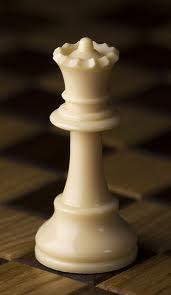
The Queen in the Opening, Part Three
Today we'll analyze the last case of the Queen getting to the center early in the game. This time she doesn't go there voluntarily, since she must do it to recapture a piece or a pawn to keep material even. The simplest example is the Scandinavian Defense (aka Center Counter Defense). Here the Black Queen gets to the center as early as move 2! The opening is not bad, but if you decide to play it, you need to recognize the danger of the early development of the Queen. One bad move can instantly lead to a disaster. Judge for yourself:
While in the Scandinavian Defense you need to watch out for your Queen's safety because she is in the crosshair of White's pieces, in some openings it is perfectly safe to place your Queen in the center since your opponent cannot really attack her. Here is one of the classical games that proves this point:
The following game is a modern classic where the tempo Black gained by attacking the Queen was compensated by the time he had to spend on Bd7 to prepare Nc6. If Black played 4...Nc6 right away, White would follow Alekhine's footsteps from the previous game and play 5.Bb5!
In my opinion, it was a very smart opening choice by Anand who avoided Kasparov's favorite Najdorf Sicilian. Sometimes I wonder why 4.Qxd4 is not as popular as 4.Nxd4, especially at the club level. White has excellent chances to create a dangerous attack and you don't need to memorize an ocean of modern theory. Anyway, if it was good for Tal (in a very important tournament), it should be fine for mere mortals!
Now, let's get back to the position that started this subject.
The problem with 4. ...Nxd4 in the Scotch is that the White Queen is perfectly safe in the center and sometimes can even deliver a decisive blow:
If you say that Black played outrageously in the opening of the last game, then you are absolutely right. But even if he plays the best defense, Ng8-e7-c6, the gain of tempo is compensated by the loss of time of moving the Knight twice in the opening, as well as moving the Queen to defend against the threat of checkmate on the f7-square. The next modern game played by strong chess players shows the difficulties Black faces in this opening line:
And it is games like the last one that make the 4...Nxd4 line in the Scotch dubious.
I hope our investigation of the early development of the queen will help you to make correct decisions in your own games.
Good luck!






